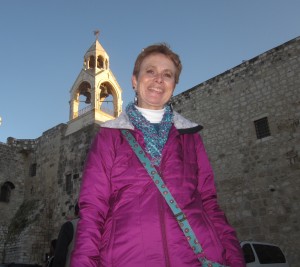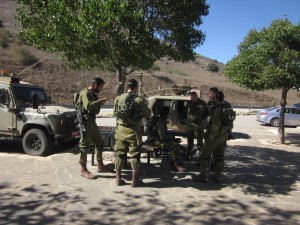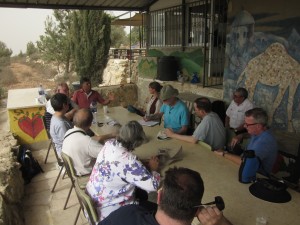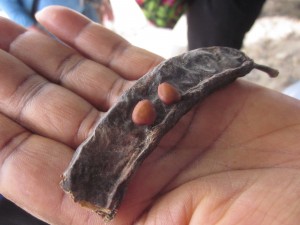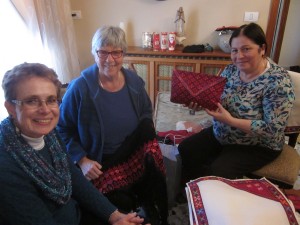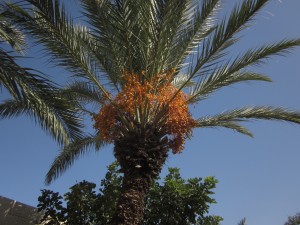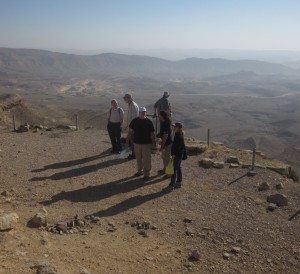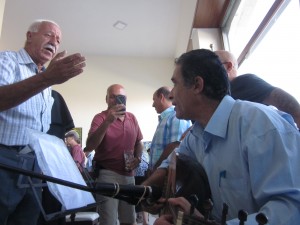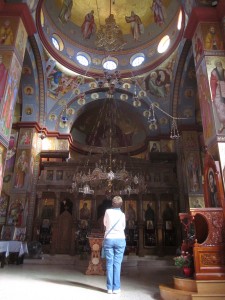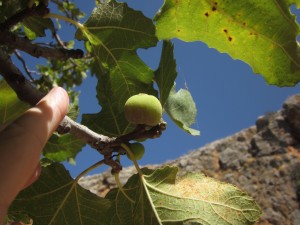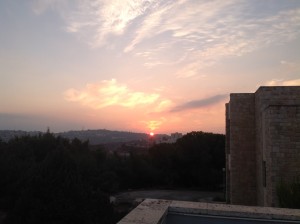On December 2, my wife Bridget arrived from California, and I was able to introduce her to my colleagues from the Tantur Program. She participated in our farewell celebrations and prayers. The two of us visited Bethelehem on December 4 and the Old City of Jerusalem on December 5. Then we rented a car and drove to Galilee, staying in Nazareth and visiting Tabgha and Sevad. On December 9, Father Russ McDougall, the Tantur Rector, drove us to Tel Aviv on his way to the airport, from which we departed. In thinking about my time at Tantur, I remember the people we met who made a powerful impression.
- When Professor Edward Breuer went over the Prophet Isaiah with us, I felt as if he were saying that the “answer” to the Israeli-Palestinian struggle is there in the text, in the words of the prophet, especially in his condemnation of Israel. “Learn to do good. Make justice your aim: redress the wronged, hear the orphan’s plea, defend the widow” (Is. 1:17). But Eddie told me, at the break, that it was not that simple. He has three sons, all of whom were in the Israeli Defense Force, and he is very proud of them. “I know you have been here more than two months,” he said. “But you haven’t yet seen enough to make a final judgment.” His faith in his children inspired me.
- Daoud Hasan’s “Tent of All Nations” made very concrete the tension that exists between Palestinians and Israelis. At the easiest level, it is a question of land rights. He, a Palestinian Christian, wants to retain control of his land, which the State of Israel would like to seize. But more importantly, there is the question of why his land is so important. He won’t sell it, even though the Israelis said, “Name your price.” His anecdote caught me off-guard. I myself have never had that kind of commitment to a piece of property. Daoud’s comment provoked me to see that the conflict is about cultural values very foreign to my own.
- Professor Deborah Weissman’s lecture on feminism was a real surprise. I had expected something along the lines of a philosophic commitment to equal rights for women. But she did not take that tack at all. The empowerment of women in Judaism, she said, takes place when women are willing to accept the rules and regulations that the Torah specifies for men. In other words, feminist empowerment comes when women bind themselves to the rules that God imposed on the other sex. This provided an insight into spiritual psychology. The Law of God is not meant to be a burden, for Debbie, but a way of showing devotion.
- On December 1, we visited Sami Awad at the Holy Land Trust in Bethlehem. The trust seeks a lasting and just peace among Israelis and Palestinians that transcends politics and addresses the problems of violence and oppression. Sami was inspired by his uncle, a non-violent activist during the first intifada. The State of Israel deported his uncle as a threat to national security, and to this day the elder Mr. Awad has only been allowed occasional touristic visits to see his family. Other terrorists, such as Yassir Arafat, have been allowed to travel in and out of the Palestinian territories. Why, Sami asked, did the state regard a nonviolent activist like Sami’s uncle as such a threat?
- During the overnight at Kibbutz Mashabei Sadeh, Jared Goldfarb introduced us to Avigail, the kibbutz veteran of 40 years. She had five children, and placed each of them in the nursery as soon as they were weaned. This seemed unusual. But for a mother, it must have been a huge sacrifice. She herself said she wouldn’t do it today, and the practice was dropped at the kibbutz in 1986. In fact, two of her grown children have chosen to live on the kibbutz. But it revealed Avigail’s commitment. She became for me a symbol of Israel. She symbolized the Israeli people’s high degree of commitment to the survival of their nation. I wonder how many of us would make such a sacrifice.
- On October 6, I listened to a presentation by Miko Peled, the son of a general who had distinguished himself during Israel’s successful 1967 War. After the war, Peled’s father advocated the establishment of a separate Palestinian state. But instead of pursuing this path, said Peled, Israel used its victory in 1967 to complete the process of occupying Palestine that it had begun in 1948. Many partisans of the State of Israel point to the fact that the United Nations affirmed the establishment of a homeland for the Jewish people. Peled derided the idea of a “Jewish state,” with exclusive prerogatives for Jews. He called it the legitimation of injustice.
- Tamar Avraham, our guide at Yad Vashem (Jerusalem’s museum about the victims of the holocaust), gave another demonstration of commitment to the State of Israel. She had been a Catholic student of theology in Köln when she came to Israel on a study trip in 1987. There her life shifted and she became a citizen of Israel, converted to Judaism, and took on a Hebrew name. She has written an essay to show how the State of Israel has interpreted biblical experiences and promises in terms of a Zionistic worldview. She argues that Jews should not apply the term Exodus to events of the 20th century (as if the Palestinians were comparable to the Egyptians). To me, she is a good example of critique from within – a committed Jew who is critical of the State of Israel.
- On November 27, Jesuit Father David Mark Neuhaus spoke to us about his ministry as Latin Patriarchal Vicar for Hebrew-Speaking Catholics in Israel. He was born to a Jewish family in South Africa and was sent to a boarding school in Israel. There, as a young adult, he became a Christian and entered the Jesuit order. He spoke about the tens of thousands of Catholics, mainly migrants, who reside in Israel, speak Hebrew, and are being assimilated into Israeli society. He had a challenging message: there is but one covenant of God, he said, and both Jews and Christians share in it. Yes, God gave to the Jews “the land,” he said, but in the original covenant, the land was a not a nation-state. God’s people have custody of the earth for the benefit of all people.
In the end, admired the courage and determination of the Jewish people to establish a state in the Holy Land and create a modern nation with well-educated and compassionate citizens. But I wondered how long the State of Israel, in securing its own Jewish citizens from terror, would consign its Palestinian citizens and residents to a second-class status. I also learned a lot about how we Christians relate to the Biblical and other religious sites in the Holy Land.
Parents try to teach their children lessons of honesty, truthfulness, and kindness. We cannot see these things, but we believe in them and try to manifest them in what we do. Similarly, the holy sites of this land are outward signs of God’s initiative. Archaeology cannot tell us that Jesus was born in Bethlehem, that he exercised his ministry in Galilee, or that he died and rose in Jerusalem. But the holy sites commemorate his birth, ministry, and destiny. They are outward signs of a spiritual reality that cannot be captured in archaeological proofs.

